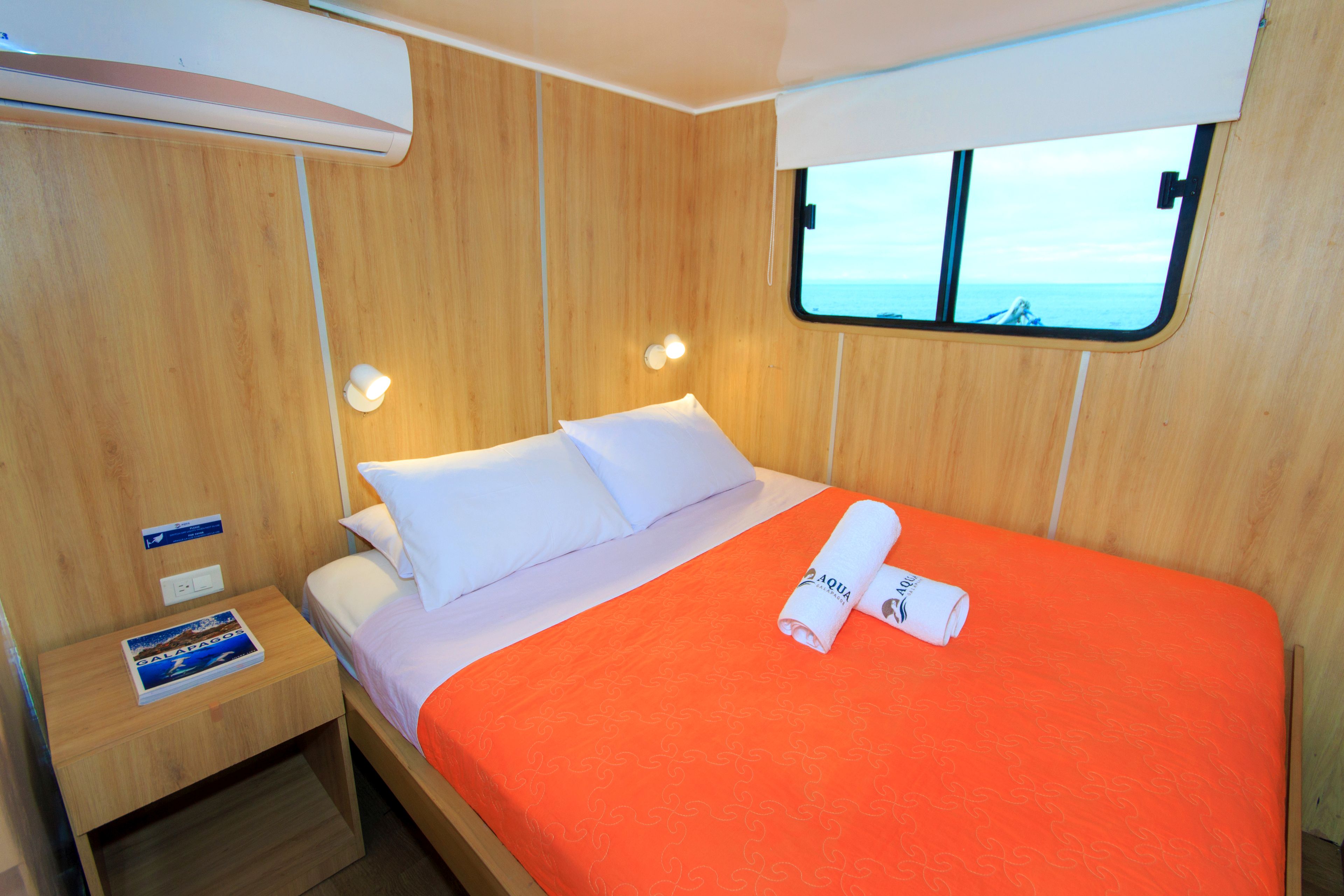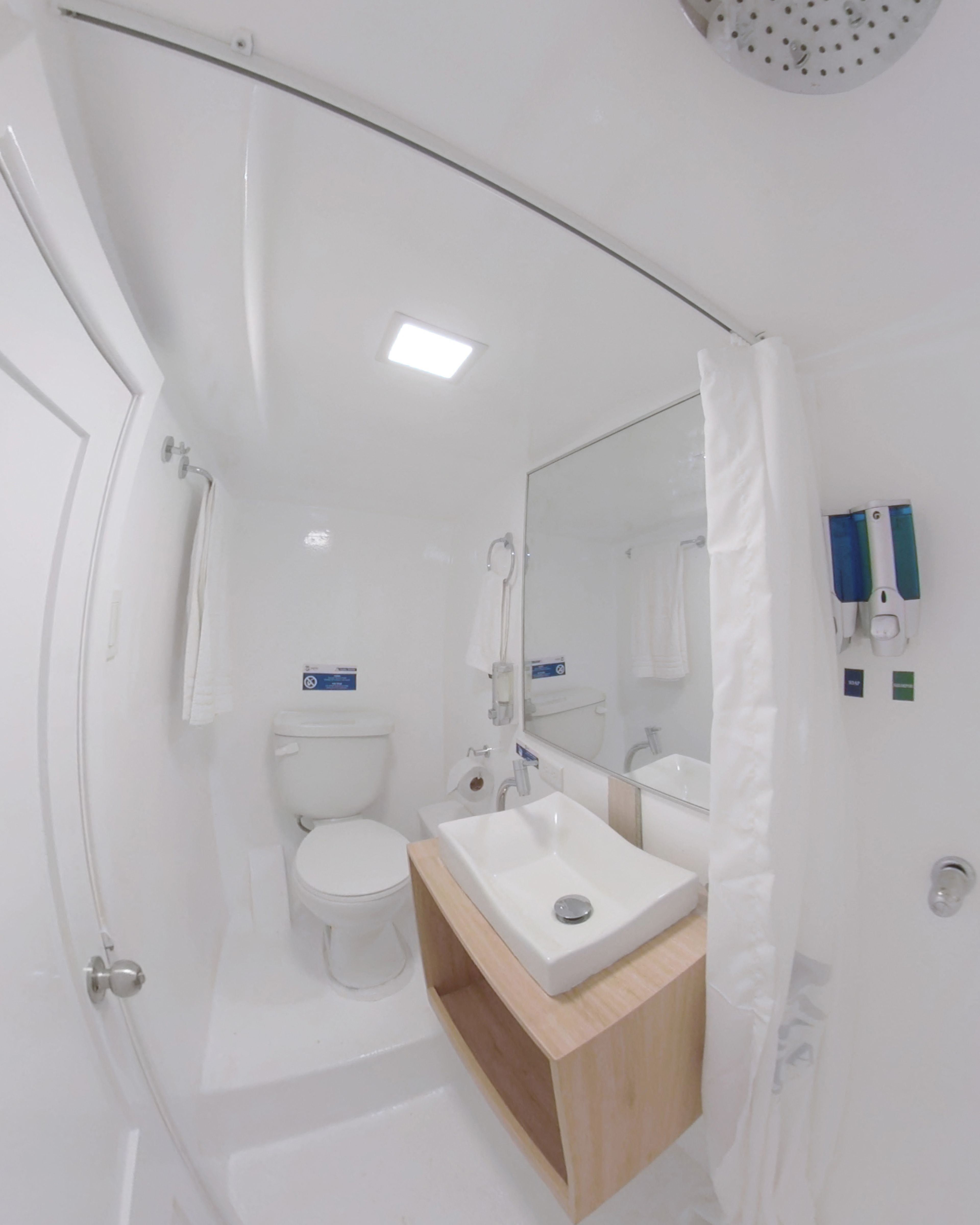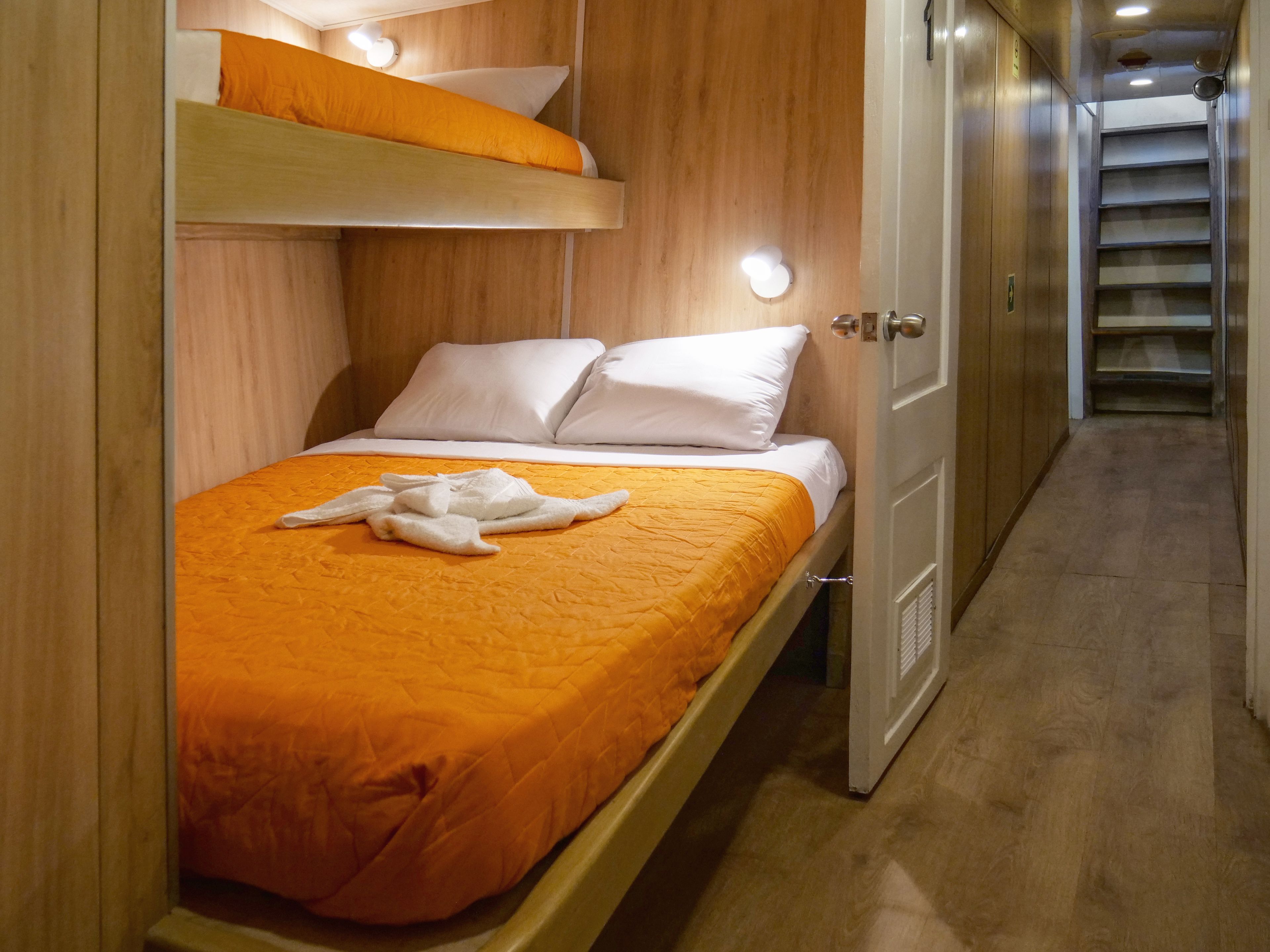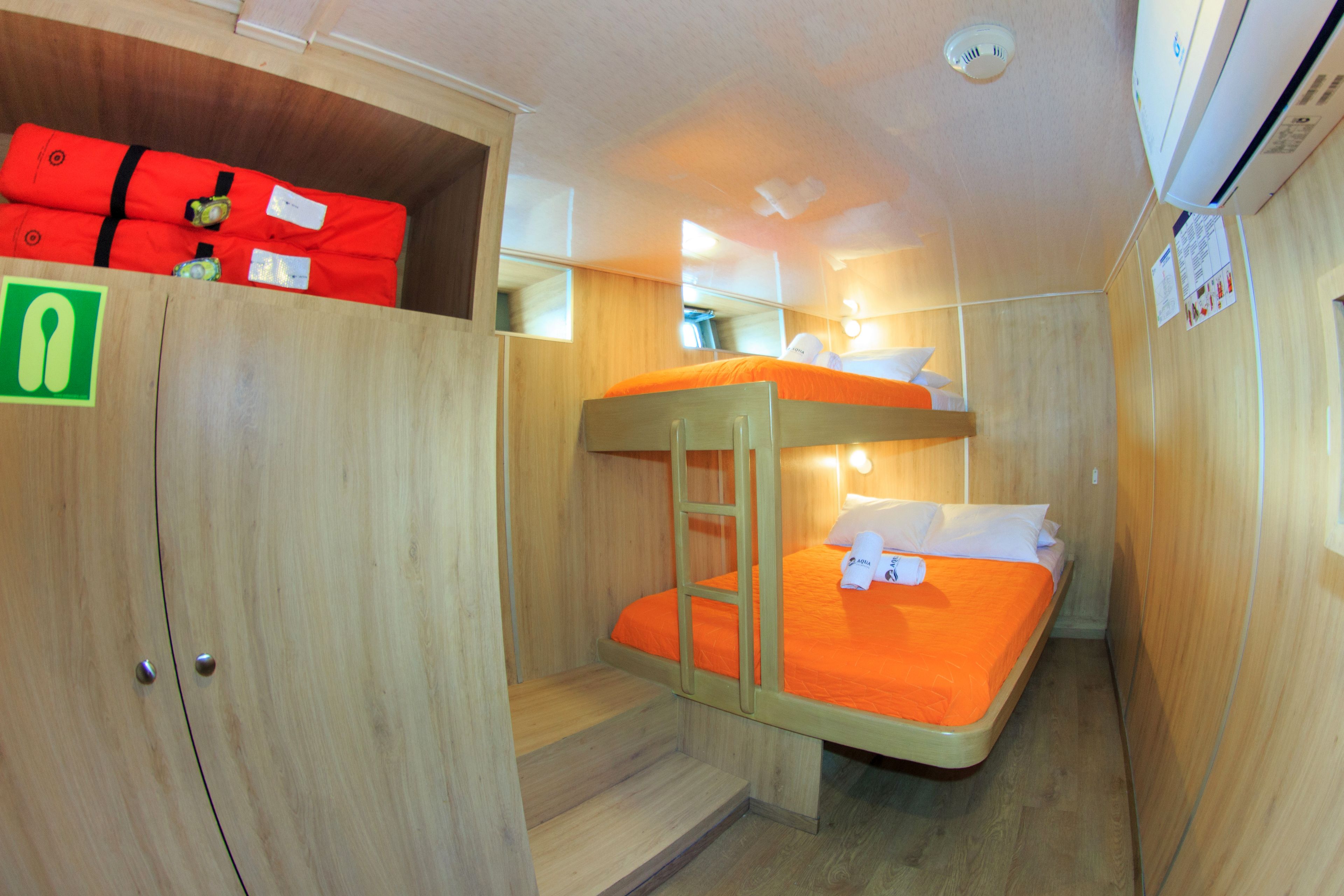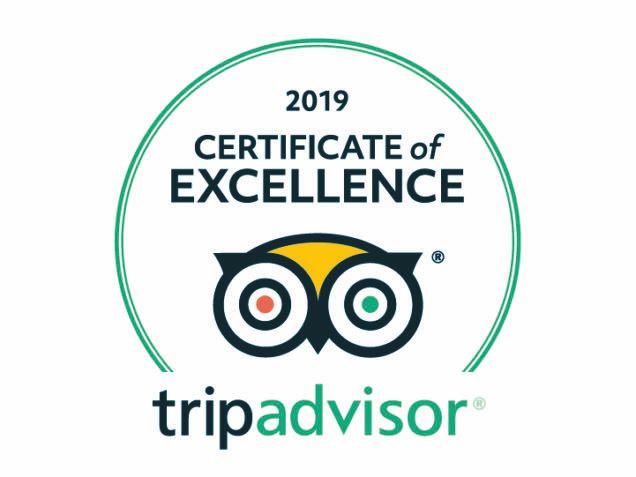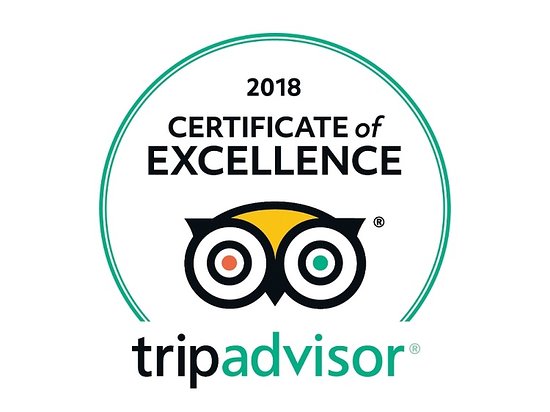AQUA DIVING YACHT
ABOUT AQUA YACHT DIVING
The Galapagos Aqua yacht is the ideal boat for divers and adventure lovers of all ages! It offers a unique combination of both liveaboard diving safaris, including the best diving sites of the archipelago, as well as naturalist cruises to see what makes the islands themselves so special, something that should not be missed when visiting the Galapagos Islands. Combine the incomparable diversity above and under the waves at truly the best value available!
Our Liveaboard Diving cruises visit the most exceptional highlights of the Galapagos Marine reserve, including Darwin & Wolf Islands.
Technical Details
- Capacity: 16 Passengers
- Model: NA
- Year: 2021
- Power: Information not available
- Speed: 10.00 [Knots]
- Type: Information not available
- Length: 25.00 [Mt]
- Width: 5.50 [Mt]
- Draft: Information not available
- Water Capacity: Information not available
- Fuel Capacity: Information not available
- Zodiac: 2
Safety
- Here at Galapagos, we pride ourselves on our diving safety record. That is why all our staff has been trained in primary first aid and secondary care, and no expense has been spared in relevant safety departments. We have a fully stocked first aid kit on board, as well as emergency oxygen and a trauma kit.
- Every effort has been made to attain high-security standards. On the bridge, we have an EPIRB, marine rescue GPS to locate our divers, long-range radio phone (for use in emergencies only), FM and SW Radio, and VHF and SSB radio. There are also fire detectors throughout the boat and a large number of fire extinguishers. All of our staff are trained by a fire control specialist in the unlikely event of an outbreak. There is also an adequate number of personal flotation devices and lifebuoys
GALLERY YATCH
AQUA DIVING YACHT
DIVE DECK
ACOMODATION
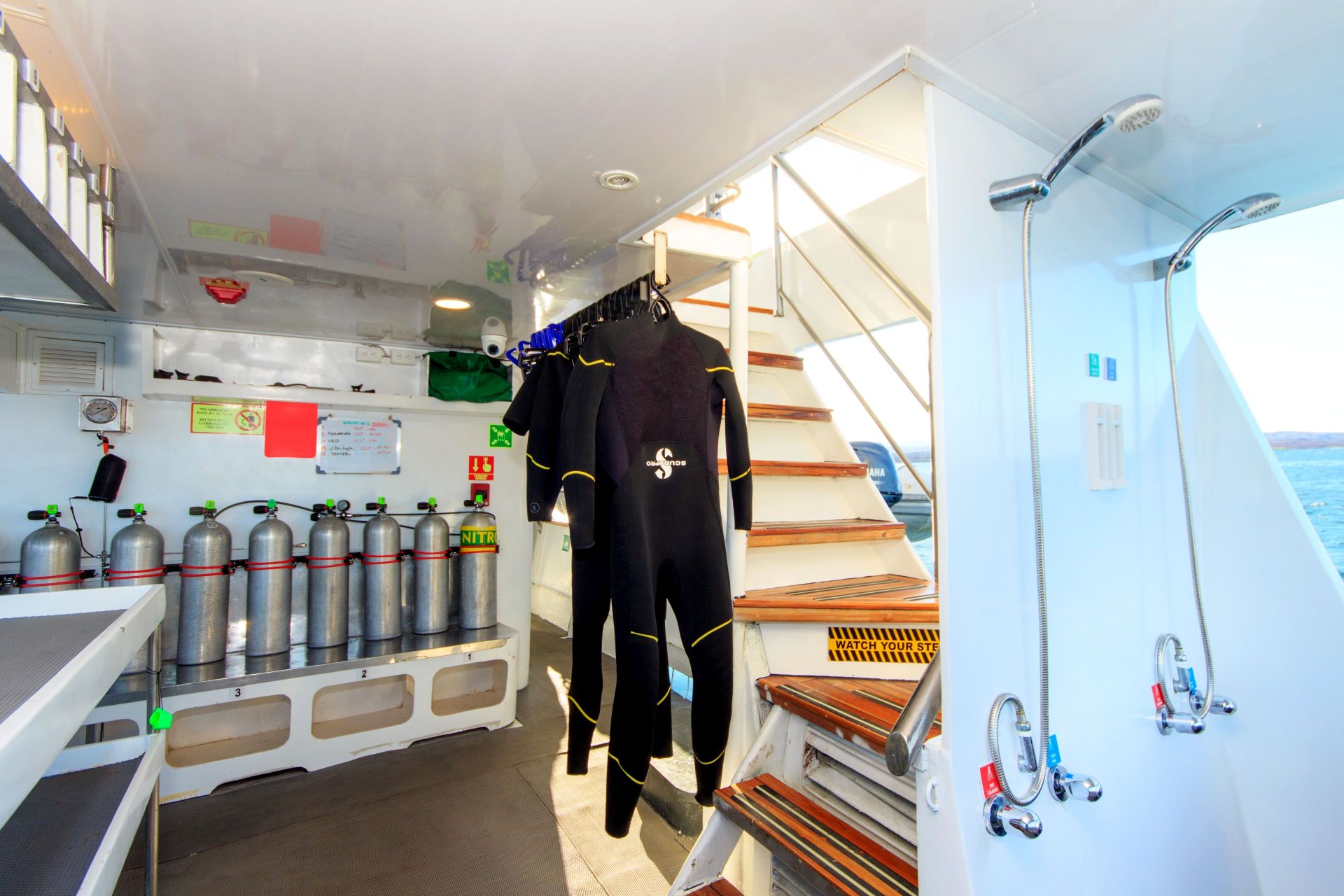
DIVE DECK:
Calipso Galapagos has a spacious dive deck. Each stainless steel diver station has storage underneath. We have a deep stainless camera rinse tank and a dry charging area with shelves to accommodate your batteries. Most are 110 v, however, we do
have some 220 v outlets.
The large stainless camera table has 3 levels. The dive deck also has a bathroom, a towel warming station and 4 hot showers.
Each diver will have an individual dive station. Warm towels distributed after each dive will be embroidered with numbers. For hygienic continuity, please use only the towel number that corresponds with your cabin number. Please do not take these towels back to your cabin. They are only for use on the dive deck.
EQUIPMENT ON BOARD:
• DIN Adaptors
• Nitrox (Extra cost)
• Rinse Hoses
• Dive deck
• Tenders for diving
• Side mount Diving
• Shaded Diving Area
• 2 ribbed zodiacs (pangas)
• 2 dive guides (1 per 8 divers)
• Individual dive stations
• Equipment rental (Extra cost)
ITINERARY A - 8 DAYS
TUESDAY
AM: Baltra Arrival and Transfer to the Boat
PM: North East Baltra
WEDNESDAY
AM: Isabela Island: Cape Marshall
PM: Manta’s city
THURSDAY
AM: Darwin Island
PM: Darwin Island
FRIDAY
AM: Darwin Island
PM: Wolf Island
SATURDAY
AM: Wolf Island
PM: Wolf Island
SUNDAY
AM: Isabela Island: Vicente Roca Point
PM: Fernandina Island: Cape Douglas
MONDAY
AM: Island Santiago: Cousin` Rock
PM: Santa Cruz: Highlands/Chato Tortoise Reserve
TUESDAY
AM: Baltra: Transfer to the Airport
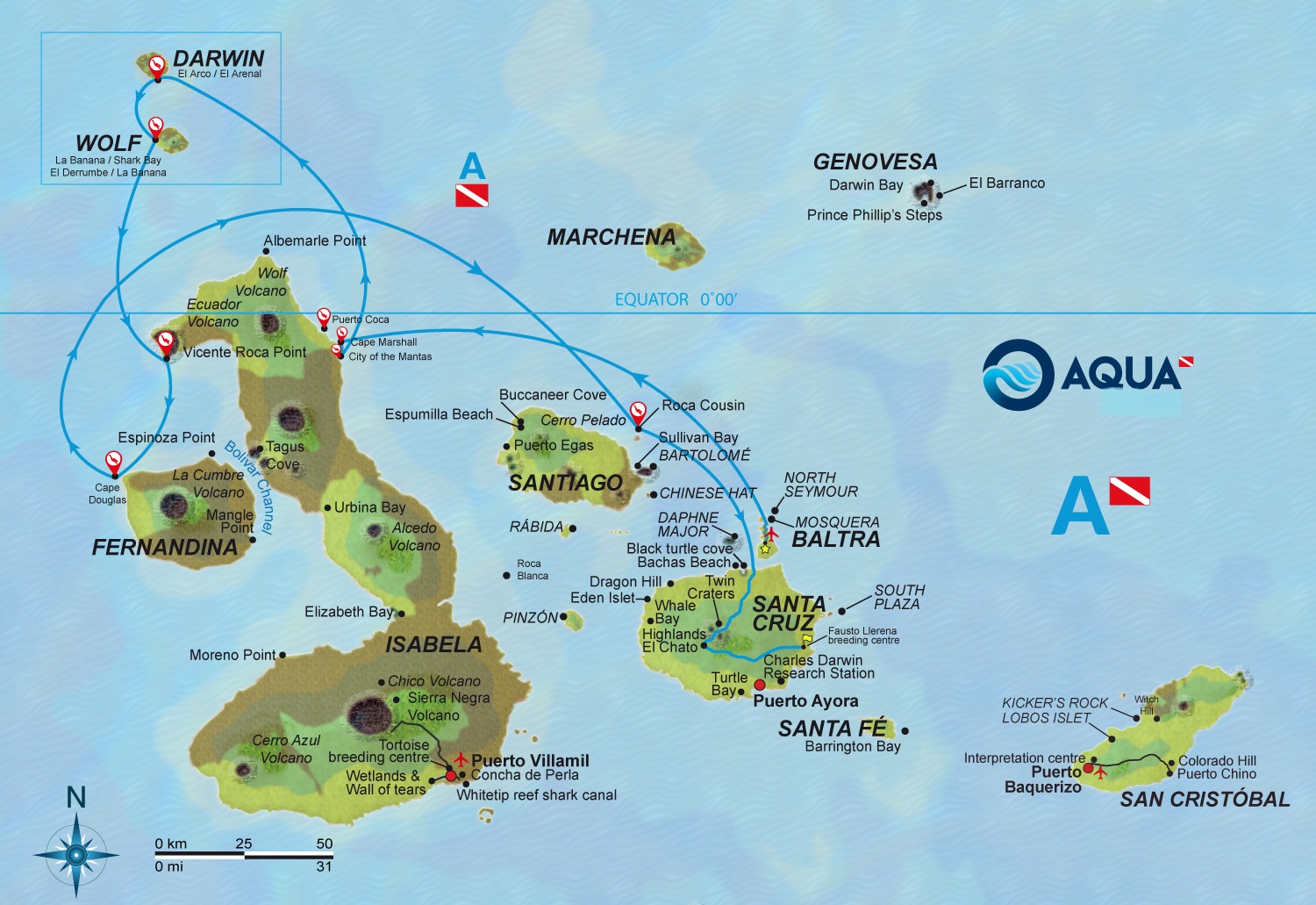
DAY BY DAY
AM: Baltra Airport Upon arrival
Here you will climb aboard the yacht Aqua, where the crew and the captain will greet all passengers. Your cabin will be assigned and you can check any rented diving gear. After this, the guide will begin the briefing about safety and activity details, as well as the afternoon’s dive. Finally, you will enjoy your first lunch on board.
PM: Baltra North East
(Checkout dive)
There’s so much to see at North Seymour, you might want to stick around for more than one dive. The gradual rocky slope that extends from Seymour Island’s northeastern shore provides habitat yellowtail grunts, blue striped snapper and salemas. You might also spot groups of eagle rays, marble rays, manta rays, stingrays, jacks, hammerheads and, on a good dive, marlins. Don’t forget to point your camera up every once in awhile. Because of the number of fish found here, you can often observe blue-footed boobies diving in and swimming down to catch a meal.
AM: Isabela Island: Cape Marshall
Cape Marshall is located on the northeastern coast of Isabela island, just a bit south of the equatorial line and the base of the active Wolf volcano. This area offers drift diving and also an almost vertical wall of volcanic rock that falls all the way to the bottom of the sea. This is a great location for spotting hammerhead, white-tipped, and Galapagos sharks.
Occasionally, whale sharks can also be seen. There are huge schools of black-striped salema and barracudas. You can also see black coral growing along the volcanic wall.
PM: ISABELA ISLAND: MANTA’S CITY
A unique attraction near Cape Marshall's is a place where giant manta rays are so often seen that it was named "Manta’s City". They roam feeding in the plankton-rich waters, so visibility can be below. After returning on board the Aqua, we will start sailing towards Darwin, as the distance to cover is quite considerable.
AM: DARWIN ISLAND
Due to the large number of dive sites available in Darwin and Wolf as well as the marked influence that marine conditions can have on the area, the dive sites will be chosen with these factors in mind. The guide will talk with all passengers in advance to inform them about the location, expected conditions and alternatives of each site, and learn about their interests. On Friday, the fourth day of the expedition, conditions may be suitable for night diving in one of the two available locations. The regular options include the following: El Darwin’s Arch (Darwin) Though being one of the eye-catching landmarks of the Galapagos Islands, only a few can truly admire the sculpture of Darwin’s Arch themselves. The monumental portal is not even the real highlight, of which treasure is hidden beneath the breakers that splash against the shallow reef platform. Long-cherished dreams often come true at this world-class underwater theatre. It is an outstanding hotspot for schools of scalloped hammerhead and, particularly, whale sharks. This largest fish in the world has almost the size of a bus and let divers get up close and personal. Almost all whale shark encounters happen frequently between June and November around this arch in the far north of Galapagos, where often-pregnant females make a brief stop-over during their mysterious solitary migration, with remora suckerfish as their sole fellow travellers.
PM: DARWIN ISLAND
Darwin’s Theatre (Darwin) Two forked ridges point from the reef foundation of Darwin’s Arch to the Northeast and to the Southeast. Beneath the splashing waves, curved shelves bend around the northern branch, which is illustratively called “Darwin’s Theatre”. It features a genuine grandstand with panoramic hangouts at about 18 m/60 ft, right above the edge of the deep drop-off wall. The exposed, barnacle-covered rocks are the perfect seats to enjoy the upcoming aquatic show, but as soon as one of the expected celebrities makes its grand entrance, every diver hurries into the blue to keep up for a while. Even if there isn’t any whale shark on the move, the usually endless parade of extraordinary marine fauna swarms by, which includes schools of sometimes hundreds of hammerhead sharks, patrolling Galapagos requiem sharks, incidental silky sharks, and likewise, hunting yellow-fin tunas, wahoos, bonitos, amberjacks, as well as massive pelagic schools that transform into whirling bait balls when hunted.
DAY 4 : ISLAND DARWIN AND WOLFEl Arenal (Darwin) Sharks, turtles and jacks visit cleaning stations all around Darwin’s Arch, to be freed from parasites. They maintain an incredible symbiotic relationship with the resident barber fishes and king angelfishes. The busiest area is usually the sandy slope right in front of the portal, known as “El Arenal”. If the surge is not too strong, it is possible to be dropped off in these shallows, amidst dancing clouds of creolefish, to come face-to-face with individual and small groups of scalloped hammerhead sharks, as well as resting Pacific green turtles and rare hawksbill turtles in between hundreds of garden eels stretching up and plenty of colorful starfish. Further out, the sloping shelves with rubble that drop into a deep gully form the curved contours of the reef platform. The upper edge offers more hideouts between the rocks to observe approaching hammerheads. Located only 100 m/110 yd around the corner of Darwin’s Theater, there are new lifetime opportunities to swim with majestic whale sharks, or to wonder about all marine life that comes with the flow. Did we already mention bottlenose dolphins, Mobula devil rays, and giant oceanic mantas (depending on the season)? Darwin’s Theatre (Darwin) Two forked ridges point from the reef foundation of Darwin’s Arch to the Northeast and to the Southeast. Beneath the splashing waves, curved shelves bend around the northern branch, which is illustratively called “Darwin’s Theatre”. It features a genuine grandstand with panoramic hangouts at about 18 m/60 ft, right above the edge of the deep drop-off wall. The exposed, barnacle-covered rocks are the perfect seats to enjoy the upcoming aquatic show, but as soon as one of the expected celebrities makes its grand entrance, every diver hurries into the blue to keep up for a while. Even if there isn’t any whale shark on the move, the usually endless parade of extraordinary marine fauna swarms by, which includes schools of sometimes hundreds of hammerhead sharks, patrolling Galapagos requiem sharks, incidental silky sharks, and likewise, hunting yellow-fin tunas, wahoos, bonitos, amberjacks, as well as massive pelagic schools that transform into whirling bait balls when hunted. Shark Bay (Wolf) Shark Bay, located on the exposed east coast of Wolf, is shallower than most sites around, yet for many the most memorable. Besides being another spot where sharks galore, local cleaning stations reveal fascinating symbiotic relationships. Critically endangered hawksbill and Pacific green turtles visit busy king angelfishes. Cleaner fishes also groom spotted eagle rays and even hammerhead sharks. In these shallows, individual male hammerheads tend to approach motionless divers closer than schooling females in open water do. Their reluctant character is quite opposite to the curious Galapagos sea lions, that immediately look for company and love to interact!
The Landslide (Wolf) The Landslide is the premium dive spot of Wolf Islet. Looming silhouettes of dozens, seasonally even hundreds of hammerhead sharks circle around or head against the currents, preferably when these currents are strong. Ending up the blue-water safety stop right into their middle might even give you an extra rush of adrenaline! This exciting drift dive follows a boulder slope underneath the partly-collapsed east cliffs of the islet. Find a hangout between the boulders to stay for a while, and hold the barnacle-covered rocks firmly while the current flows by. Beware that well-camouflaged scorpionfishes, abundant white-spotted moray eels, and whitetip reef sharks also hang around! Some beautiful pavona corals are an example of Indo-Pacific influences around these northern islets. Wonder about the ever-changing parade of hammerheads, awesome Galapagos requiem sharks, pelagic schools, and many more species that are easily overlooked in these surroundings. Clicks and whistles indicate that bottlenose dolphins are also not far away. The hot season usually brings lots of Pacific green turtles, majestic formations of spotted eagle rays, and, if lucky, Mobula devil rays and giant oceanic mantas.
ISLAND WOLFThe Pinnacle and The Caves (Wolf) This area has some of the best caves in the Galapagos and an exciting experience at The Pinnacle, and it’s located on the northern tip of the main island. It has four good underwater caves that penetrate into the wall of the islet and are easily accessible, although the current can get a bit strong from time to time, from south to north. All the entrances to the caves are at depths of 15-21 m/50-70 ft, and there is a sandy ledge that runs along the wall below the entrances. Hawksbill and green turtles usually gather in this area, hanging around the opening or swimming in and out. The fourth cave has the largest opening, with an entrance at 18 m/60 ft, and can also be interesting to explore if you have the time. In general, the large variety of life around and in the caves includes schools of soldierfish, guineafowl puffers, moray eels, whitetip reef sharks, marble rays, cardinalfish, and lobsters hiding in holes and cracks. The dive ends in the northeastern corner of Wolf at a tall and massive underwater pinnacle, of which the top is barely below the surface of the water. The main current comes from the southeast, but there can also be other currents coming from different directions at varying depths, creating sort of a whirlpool effect. If the currents allow it, you can swim across the gap to the pinnacle, grab on, and watch the bubbles to see how the currents are behaving. Here you can watch for large pelagic species, like hammerhead and Galapagos sharks, bottlenose dolphins, and turtles.
The Secret Cave - Night dive (Wolf) The Secret Cave has its origins in gas chambers that date back to the formation of the island that eroded and collapsed with the passing of time. It is a great alternative on the northern side of Wolf if the conditions allow you to dive here. Along the wall, sometimes with hammerheads, we find the entrance into a cave that may reveal several nocturnal species, such as cardinal fishes, spiny lobsters, shrimps, colorful sea urchins, hunting moray eels, as well as Pacific green turtles and sea lions. Anchorage - Night dive (Wolf) The Anchorage of Wolf is the only dive site located at its sheltered west coast. The cove and surrounding cliffs reveal outlines of the former main crater of this extinct volcanic islet. Leeward, water temperature is higher and the turbulent currents and treacherous swell of the surroundings are hardly felt anymore. Nevertheless, some sharks and reef fish may be spotted during the surface intervals back aboard, as well as blue-footed boobies. Those who dare another, quite different adventure during these intensive days, may opt for a dark and exciting night dive. Right beneath the anchored yacht, walks and hops the weird red-lipped batfish with its leg-fins on the 20 m/70 ft deep sandy bottom. Though active at night and attracted by your light’s beam, this chilly activity probably won’t be the only opportunity to marvel at this endemic Galapagos species.
ISLAND ISABELA
AM - Vicente Roca Point (Isabela) Right at the mouth of the seahorse that Isabela Island looks like is Vicente Roca Point. The roaring echoes of the waves will accompany you as you enter a dark cave under a spectacular arch. Just around the corner, the collapsed amphitheatre of Ecuador volcano offers another impressive sight. The calmer waters of the caves are well protected from the ocean swell and are a great place to dive amongst various species of sharks, penguins, pufferfish, and even seahorses. Encounters with sunfish are also very common, and it is convenient to keep in mind that the water in this area is usually a bit cold.
PM - Cape Douglas (Fernandina) Cape Douglas is sure to provide you with incredible opportunities to observe an abundance of marine life, above and below the water. As you prepare for the dive, you can see Galapagos penguins, flightless cormorants and Galapagos marine iguanas, animals that are only found exclusively on these islands. We will also go looking for incredible marine iguanas swimming and feeding on the rocks below the surface. Some of the marine life forms you can see are the red-lipped batfish, horned shark, sunfish, and possibly whales!
ISLAND SANTIAGO AM - Cousin’s Rock (Santiago) The lone, symmetrical pyramid of Cousin’s Rock sticks just above the coastal waters of Santiago, approximately 5 km/3 mi north of Bartolome Islet. This bare volcanic rock serves as a roosting place for blue-footed boobies, brown pelicans, Galapagos fur seals, sea lions, and seasonally Galapagos penguins, which might be spotted during a dinghy ride around. It doesn’t take much imagination to realize that this triangular formation is the tiny summit of a huge underwater cone, though only divers and snorkelers can admire the unthinkable colourful world beneath. Cousin’s Rock features two popular dive sites: an adventurous wall-dive around the steep northeast corner (intermediate level) and on the opposite side, an alluring ridge flanked by a lush terraced wall and a rarely visited separate rock formation further south. The actual drop-off points around Cousin’s Rock and dive directions depend on the turning currents and local currents around these Enchanted Islands. Normally, you will be diving twice in one of these sites. The diving depths of Cousins Rock go between 12-30 m/40-98 ft, and the current can vary from medium to strong. The water temperature ranges from 20-26 °C/68-78 °F from January to May, and from 16-20 °C/61-68 °C from June to December. The visibility goes from 12-30 m/40-68 ft, and the place is mostly a reef dive. Low visibility usually means an abundance of plankton, which brings a large number of small and pelagic fish and, with them, large animals.
PM - Highlands (Santa Cruz) The native scalesia forest of El Chato Tortoise Reserve is the best place to search for Galapagos giant tortoises in their most authentic setting! Despite the interesting breeding centres –where you are guaranteed to find tortoises in their corrals– there is nothing better than to observe them in their wild environment. Though it can be quite moist and muddy, your visit may turn into an adventurous quest when they have silently left their favourite pond. Unlike the adjacent agricultural zone, El Chato Giant Tortoise Reserve is a protected area and official part of the Galapagos National Park. It extends from Cerro El Chato as far down as the southwestern coast of Santa Cruz Island, where females follow Darwin's “tortoise highways” to lay their eggs. It is estimated that in 2015 about 32,000 tortoises lived in the wild in all the islands, most of them on restricted locations on Isabela Island.
Besides tortoises in El Chato Giant Tortoise Reserve, there is also a native scalesia forest to be appreciated, overgrown with lichens, ferns, and other epiphytes. This protected area also provides excellent chances to spot numerous endemic songbirds between the dense foliage, relishing the delicacy of introduced blackberries, including Darwin's finches, colourful vermilion flycatchers, and yellow warblers. In the tortoise pond are also aquatic birds, including the paint-billed crake. If lucky you might spot the elusive Galapagos rail in the high grass or short-eared owls at the entrance of the lava tubes
ISLAND BALTRA
Transfer to Baltra Airport It’s time to say goodbye to Galapagos! It’s been a pleasure accompanying you on this unique trip and we hope to see you again very soon! Assisted by the naturalist guide and some crew members, the dinghy will bring you and your luggage to the Seymour Ecological Airport, where you will take the shuttle back to the airport. In case you have booked your trip for a longer stay with us, we would be welcoming any potential new fellow passengers to the yacht, and continue our trip to the next visiting site!
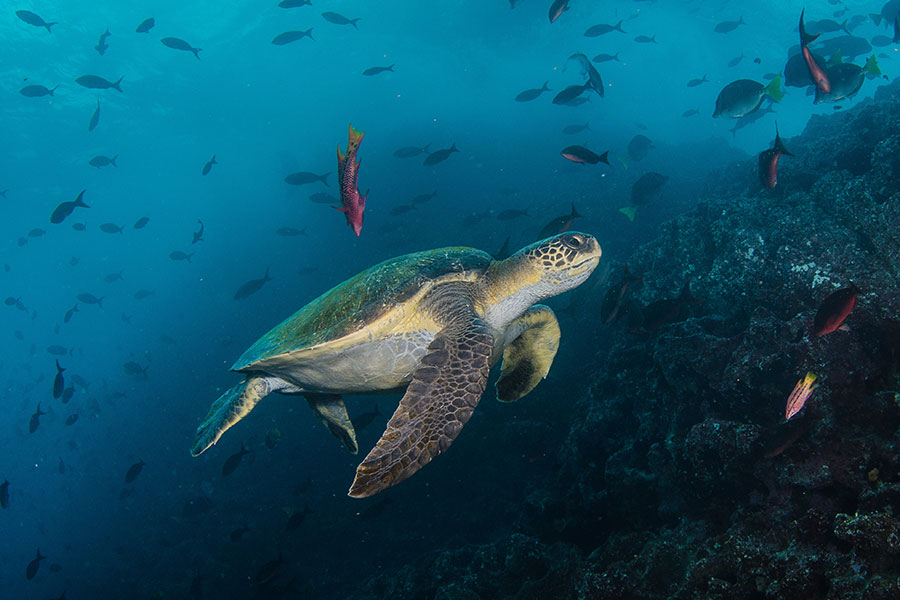
Aqua Yacht Rates 2025
8 Days $5745
Per person
learn more
INCLUDED:
- Accommodation in double cabin with private bathroom and Air conditioning
- All meals during the cruise.
- Certified Diving guides
- Unlimited purified water, coffee and tea.
- All diving and visits as mentioned in the itinerary (please note that the itinerary is subject to change).
- Towels provided
- Weights
- Belts
- Scuba safety equipment (personal marine rescue GPS, storm whistles diving beacon surface marker tube)
NOT INCLUDED:
- Flight tickets Quito - Galapagos - Quito
- Galapagos National Park Entrance fee ($200 per person)
- INGALA control Card ($20 per person)
- Diving insurance
- Diving equipment (available for rent)
- Alcoholic drinks
- Tips and gratuities
- Personal expenses
- Nitrox
IMPORTANT NOTES
- Single Supplement: 50% surcharge with a maximum of 2 single cabins per departure. Any additional single cabin can be booked at a 100% surcharge.
- Advanced open water (or equivalent) certificate, and a minimum of 50 immersions required to join any diving liveaboard.
- Diving insurance required to join any diving liveaboard
Facts & Questions
The days are normally spent anchored at one of the islands, although there are times when you will sail short distances between islands during the day. See our itinerary map and day-to-day descriptions for average navigation times.
What you should bring varies according to each individual, the length of your visit and even the season. We have provided a non-exhaustive list.
The airlines allow you to check-in 20 kg (44 lbs) for your flight to the Galapagos (plus carry-on hand luggage). The crew helps to carry your luggage safely on-board and to your cabin. One of the few complications of a cruise is that the planned route seldom passes by a shop where you can buy something you have forgotten…Remember, less weight means less hassle, and is more ecological as well.
Our cook will pamper you with our exquisite cuisine, generally a combination of international and Ecuadorian dishes, served in buffet style.In case you require vegetarian, dietary food or special meals, we will be happy to prepare them for you, at no extra cost. Please, let us know in advance so we can take care of it. In case you have booked last-minute (or if you have forgotten to let us know one month before departure), we cannot guarantee this service, but our chef will do what he can with the present ingredients aboard.
We convert salt water into fresh water on board (desalination). The desalinated water from the taps aboard (and in your cabin) is NOT suitable for drinking. Please fill your water bottle with the bottled water that is provided in the lounge for free and at all times.Water conservation is always a concern of ours, because fresh water is scarce on the Galapagos Islands. The desalination process uses valuable natural resources, so we ask you to please help us save water while taking a shower and washing your hands.
If you want to get the maximum out of your visit, we suggest extending your expedition by asking for the combined itineraries every one of our yachts offer.By extending your expedition, you can explore nearly all the islands and wildlife existent in almost every corner of the archipelago.
Depending on the sea currents and winds, there will be light to moderate movement of the vessel while navigating (mainly at night). The Galapagos internal waters are mostly calm, but open ocean crossings can sometimes provoke discomfort during a “rough” night, especially from August to September. Seas generally are at their calmest from January to April.Most passengers are not affected. If they are, it’s lasts a short time. However, if you are prone to seasickness, we recommend you to use a patch (these work very well) or take a pill before the anchor is lifted. Consult your doctor which medicine works best for you. Sooner or later, your body will adapt to the motion of the ship and the discomfort will diminish.



